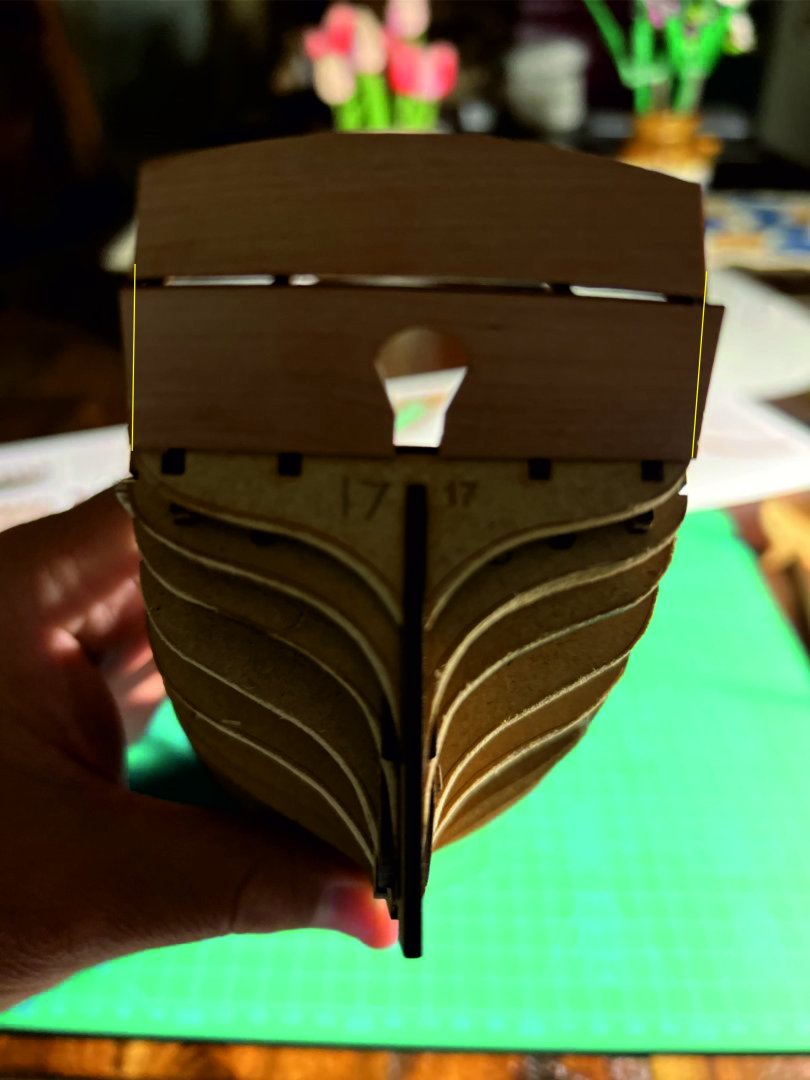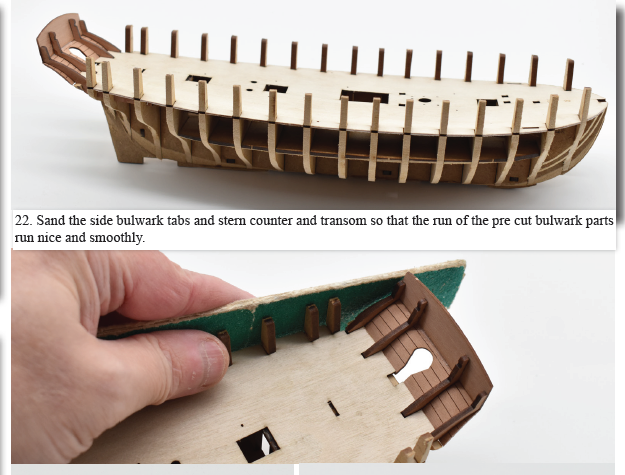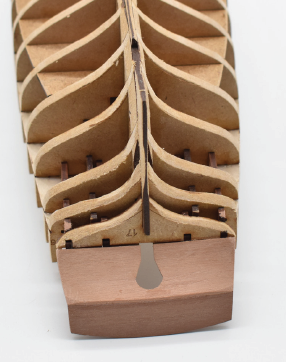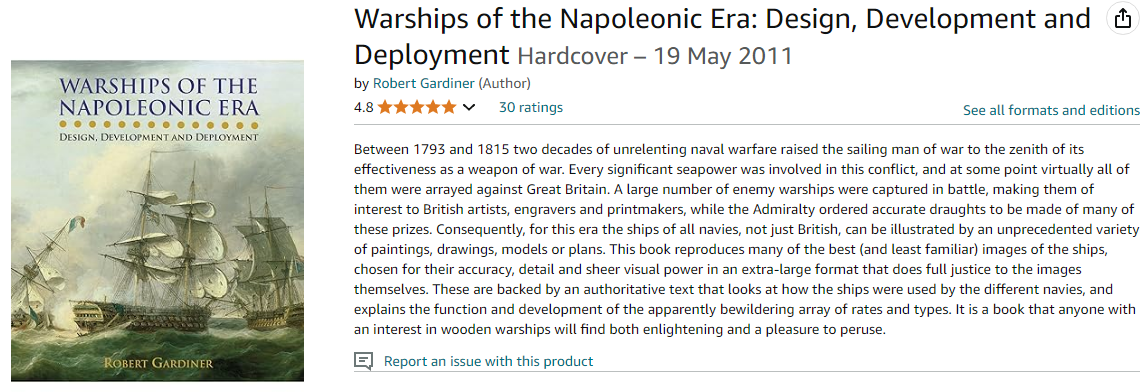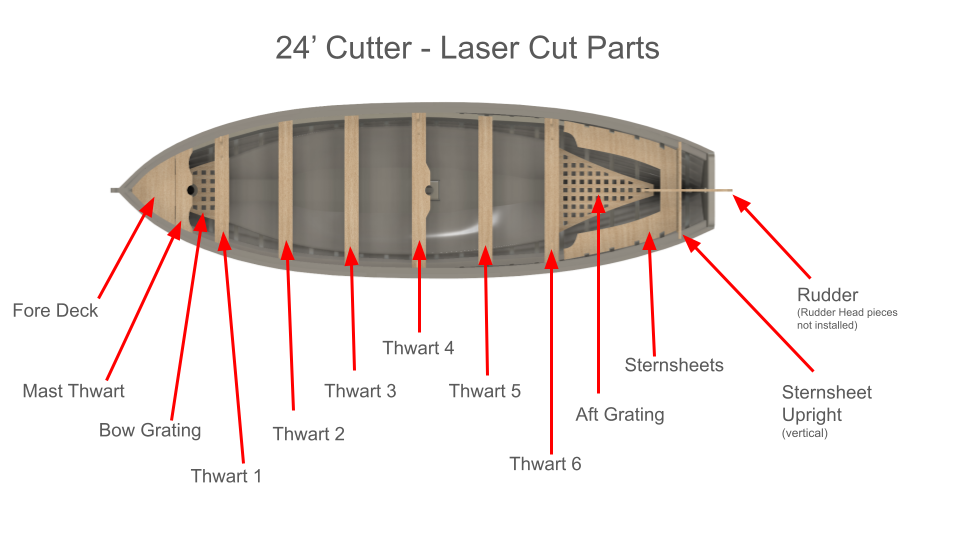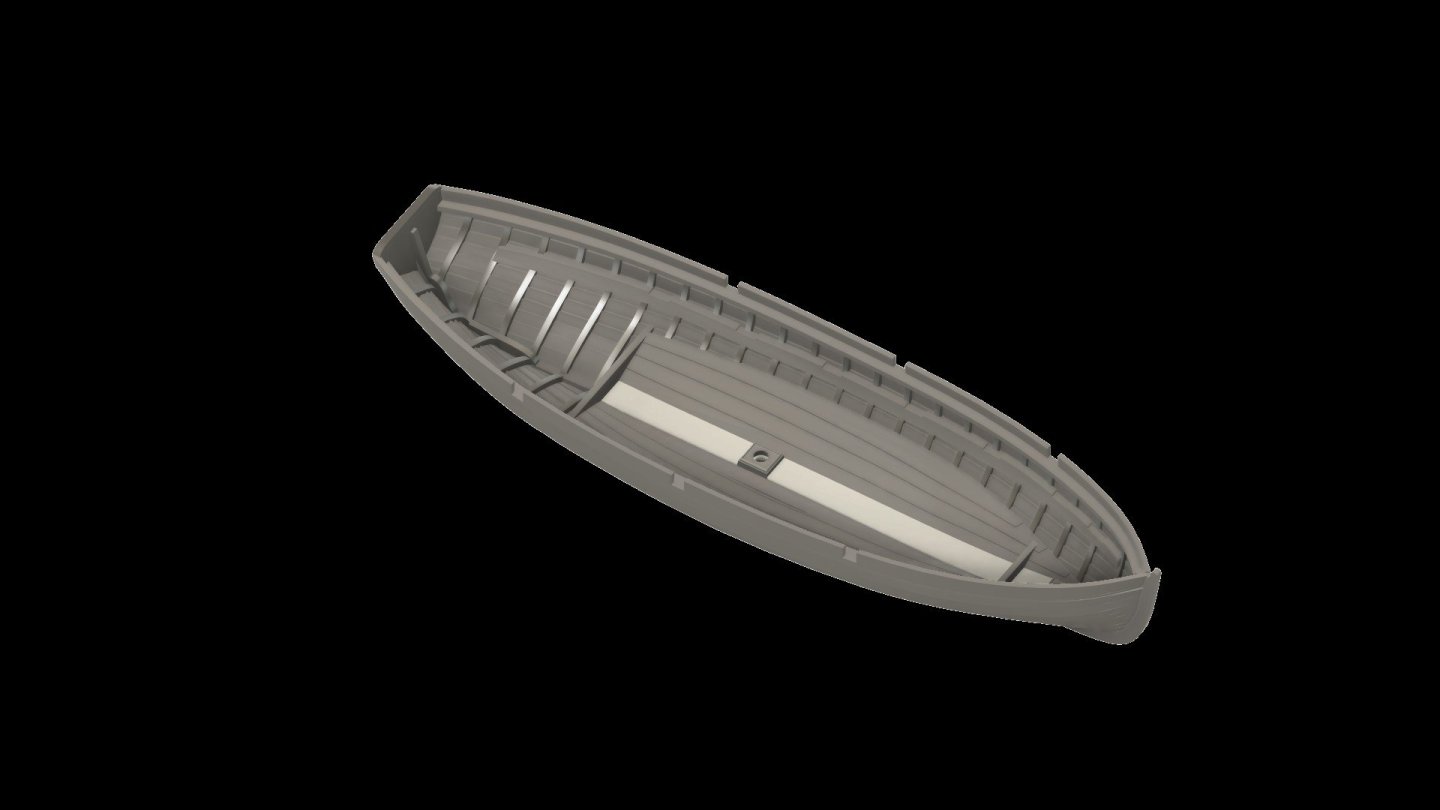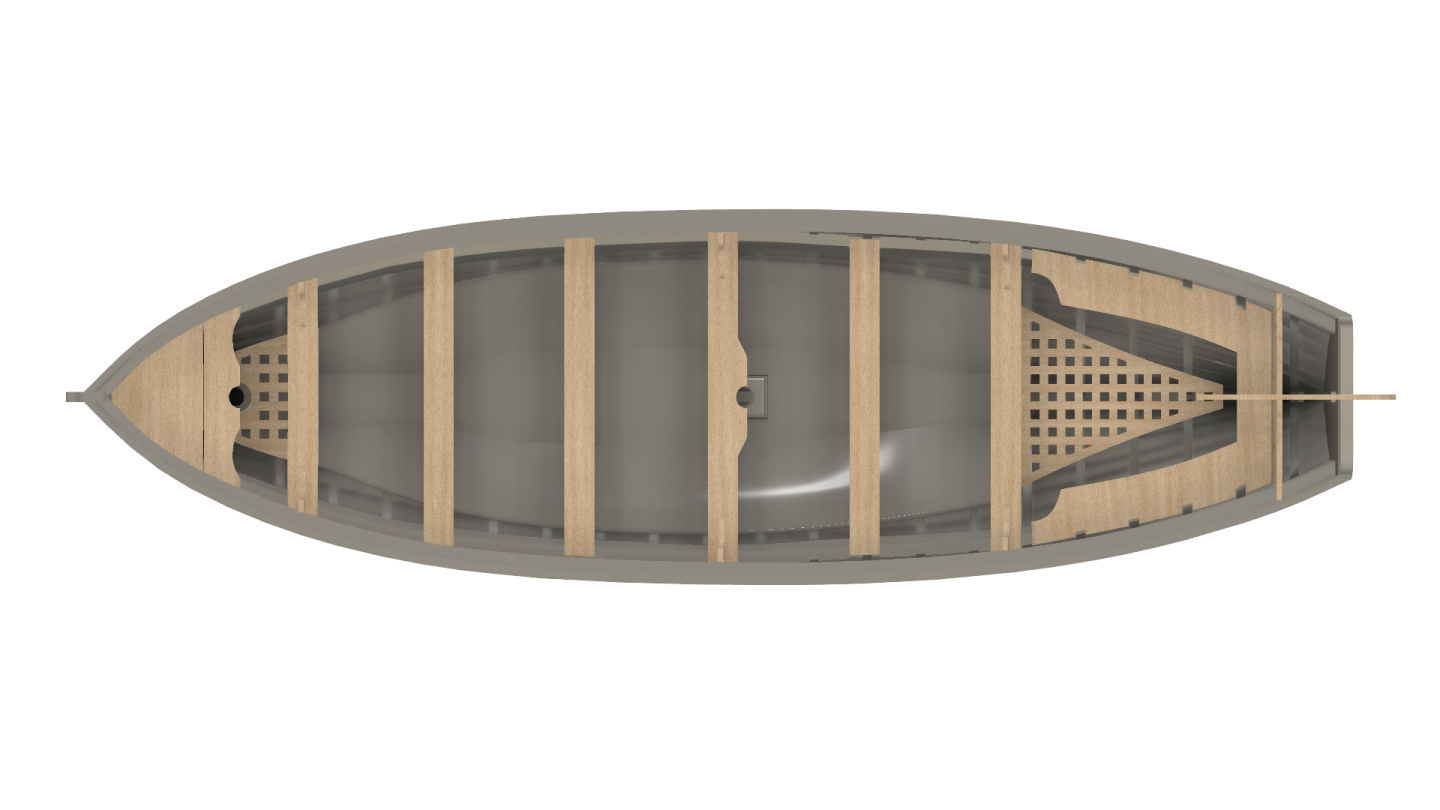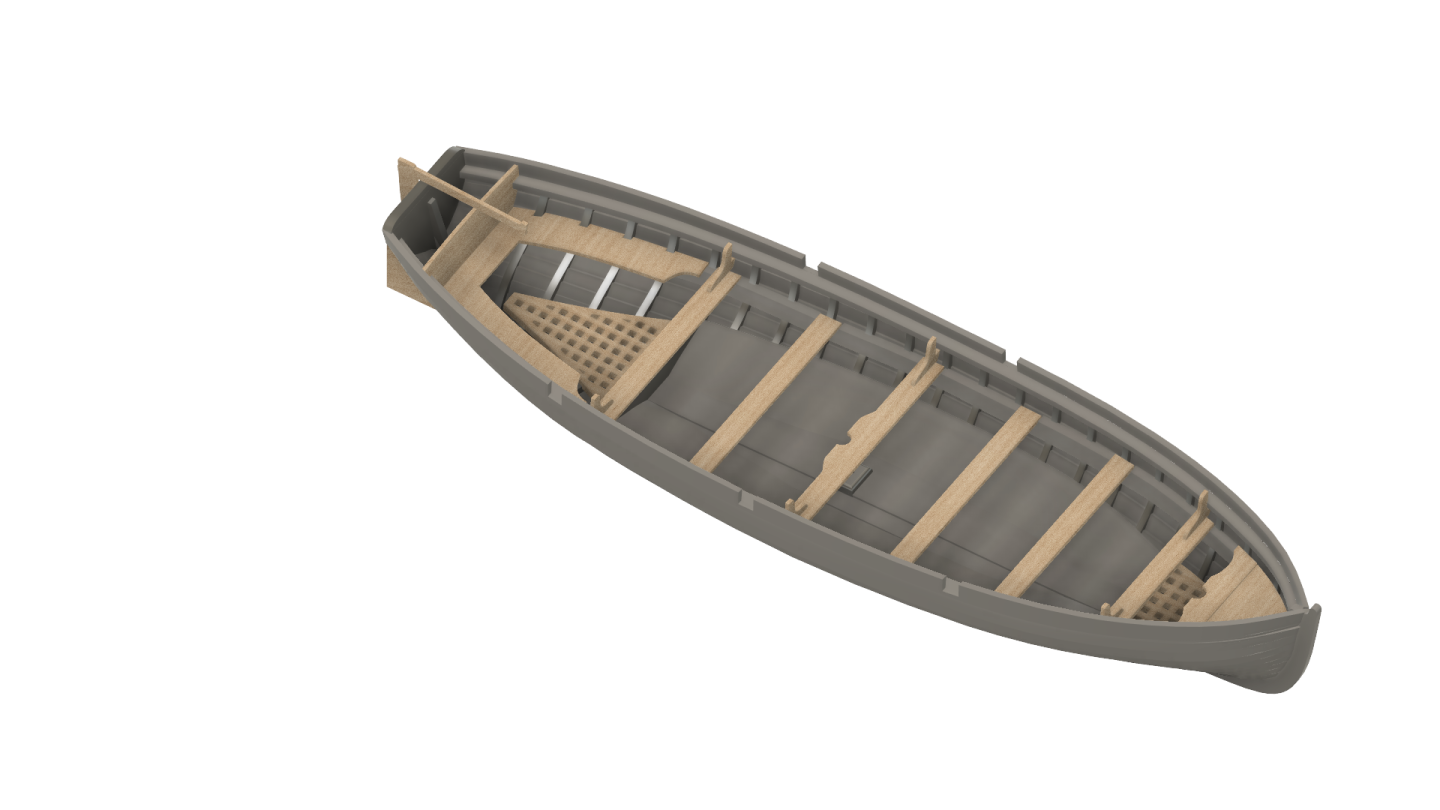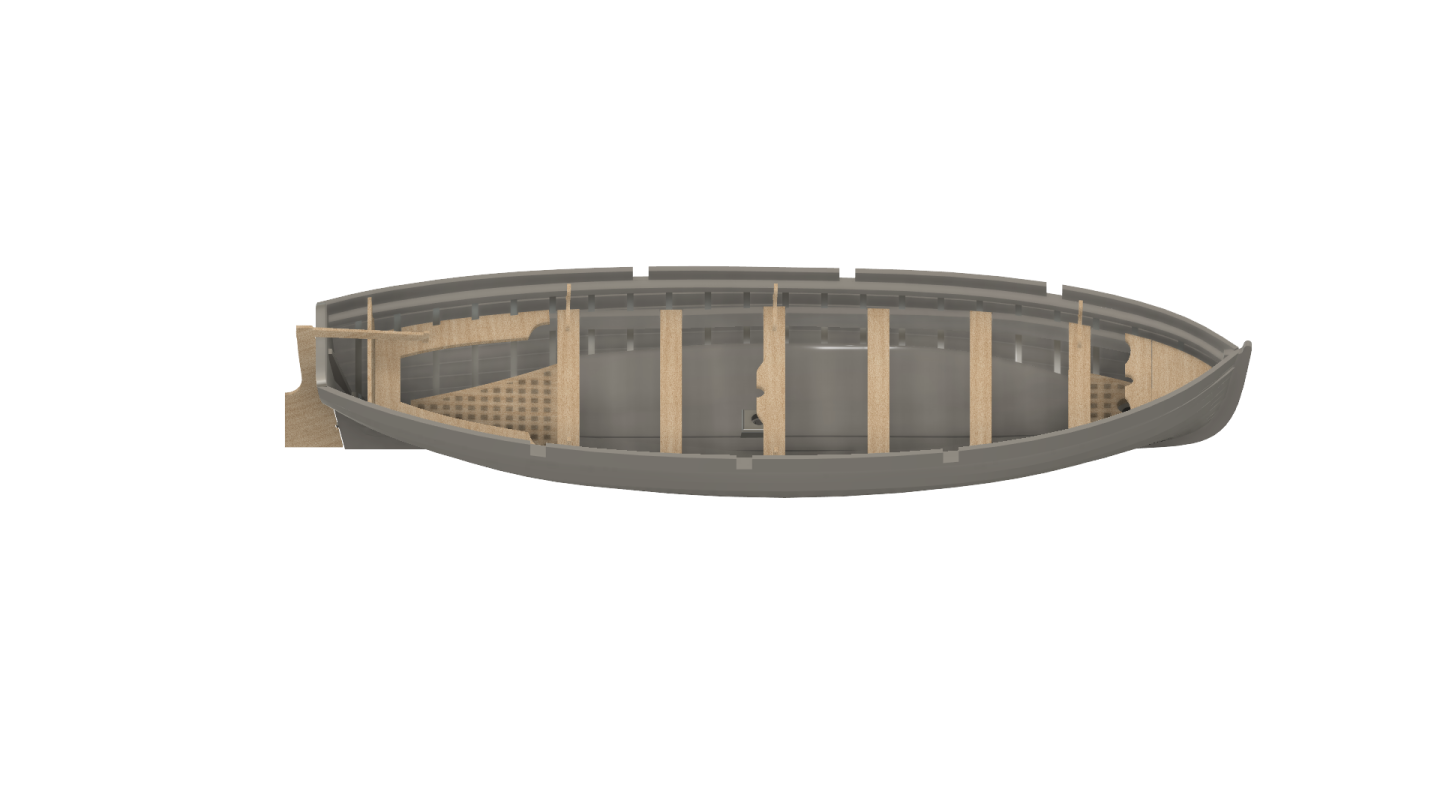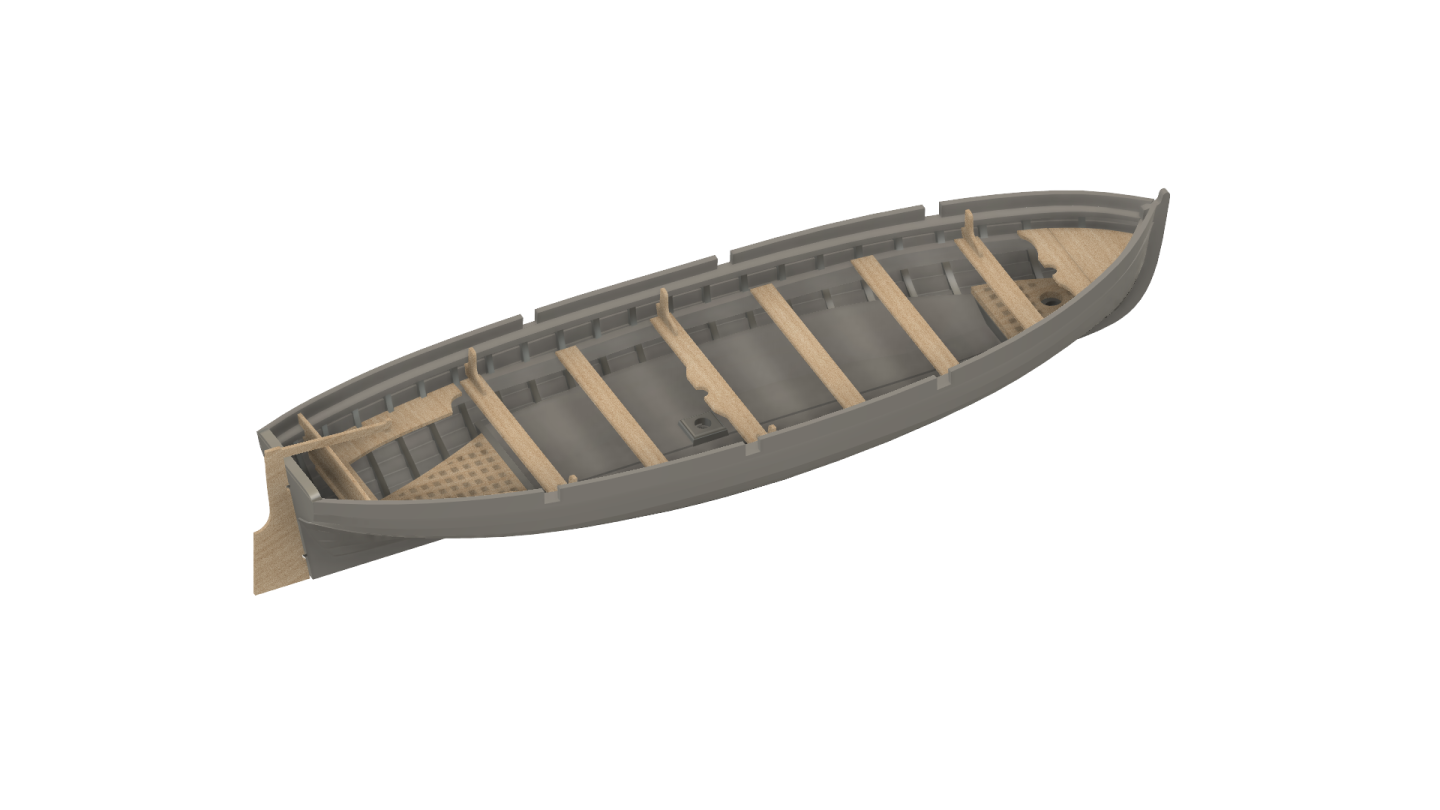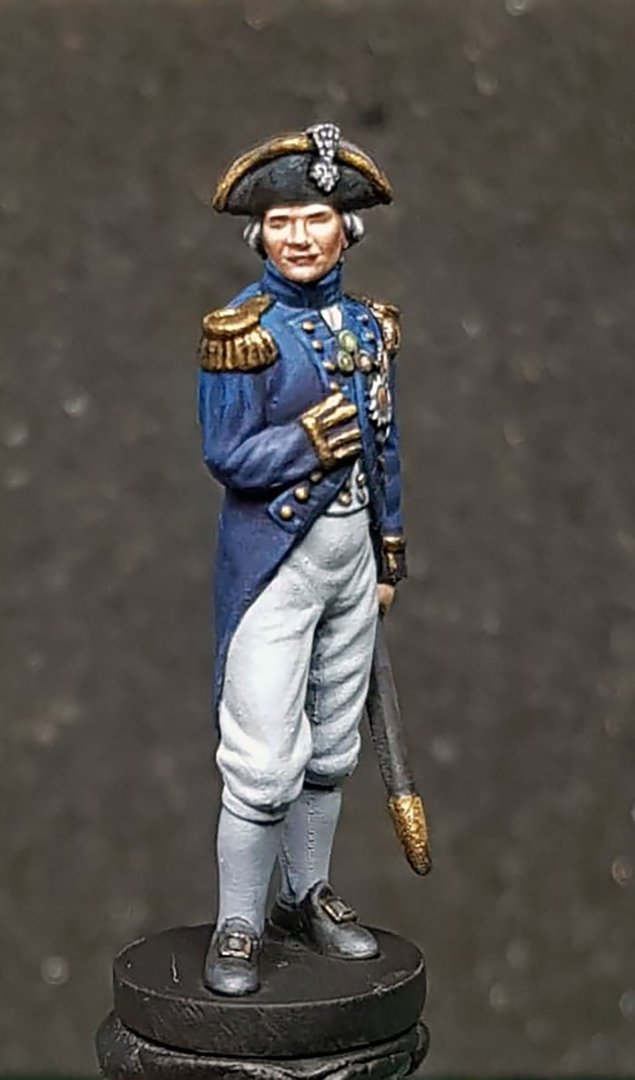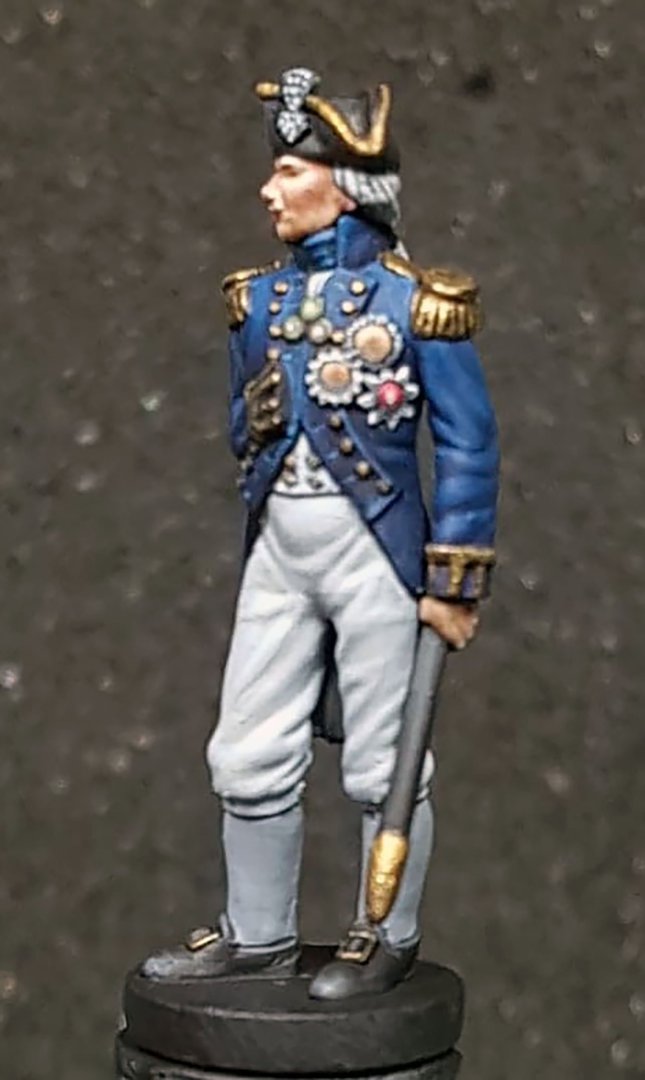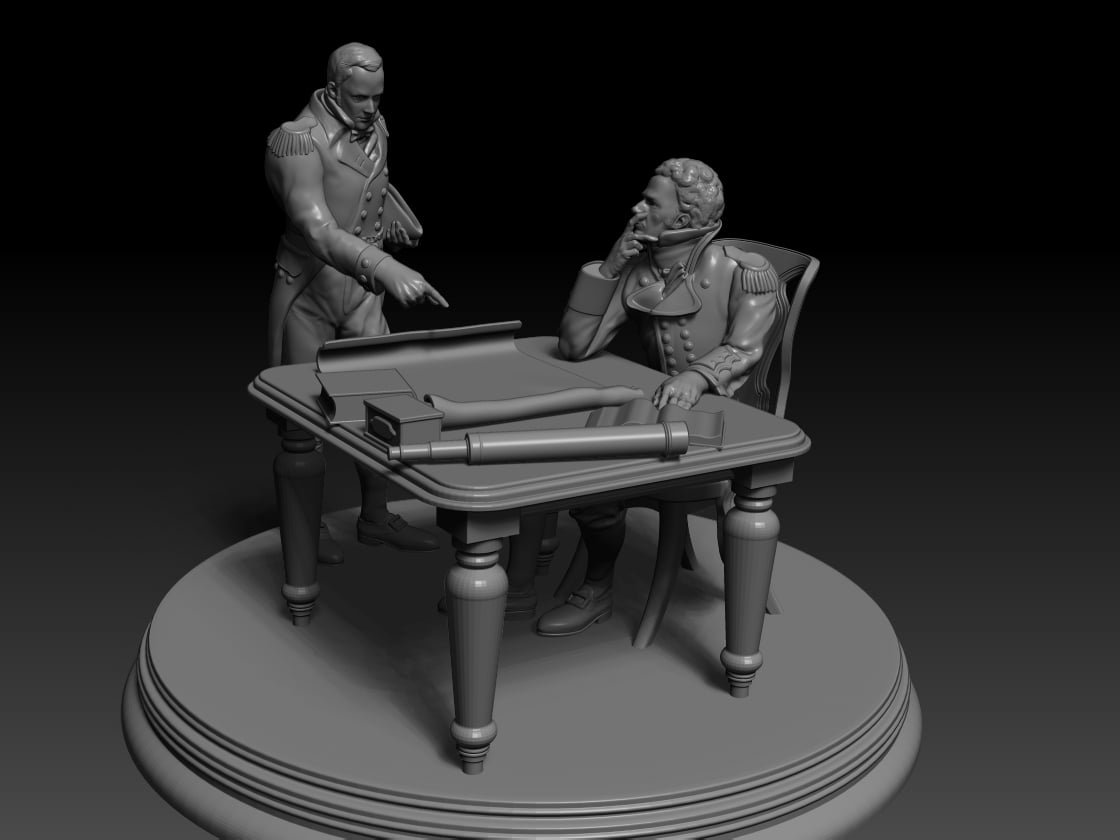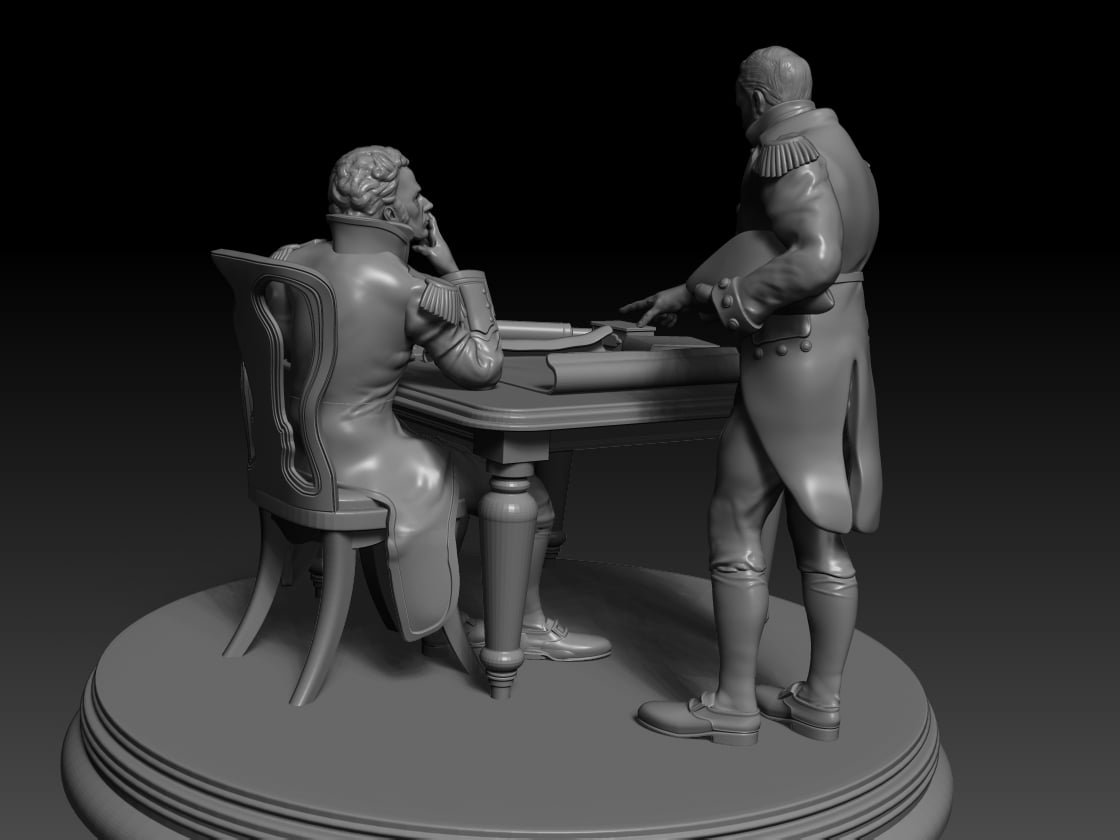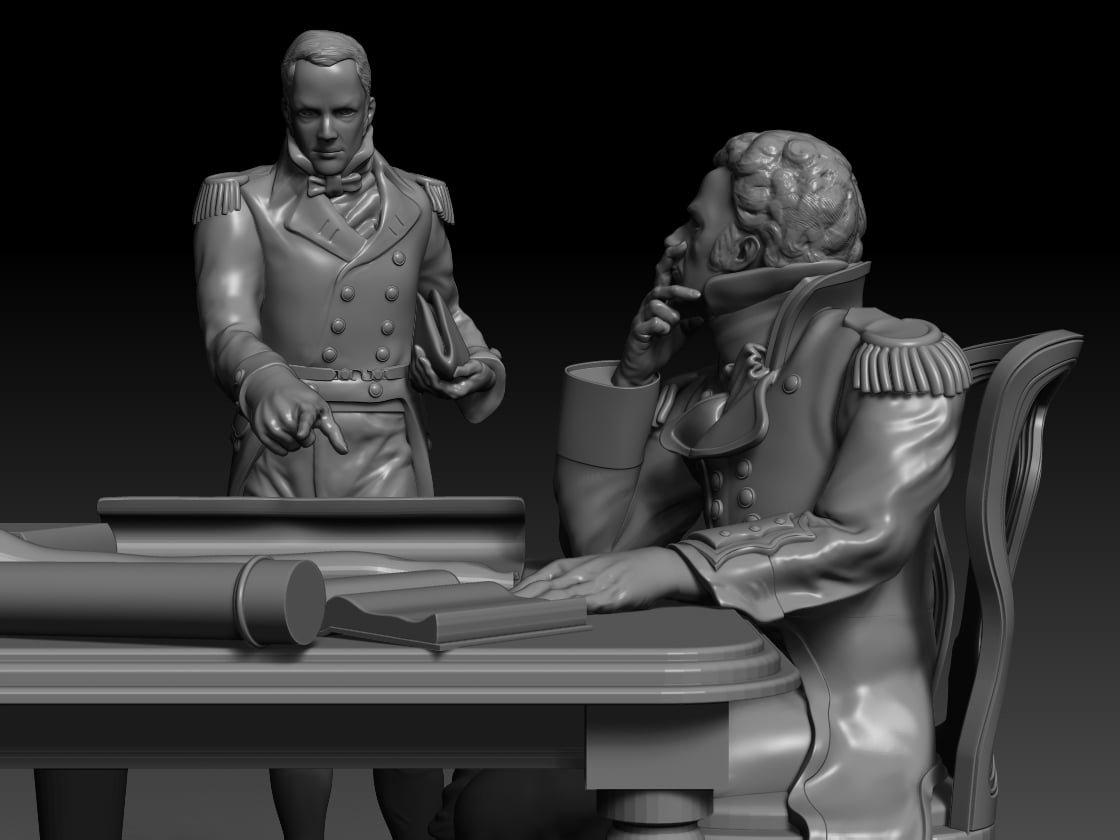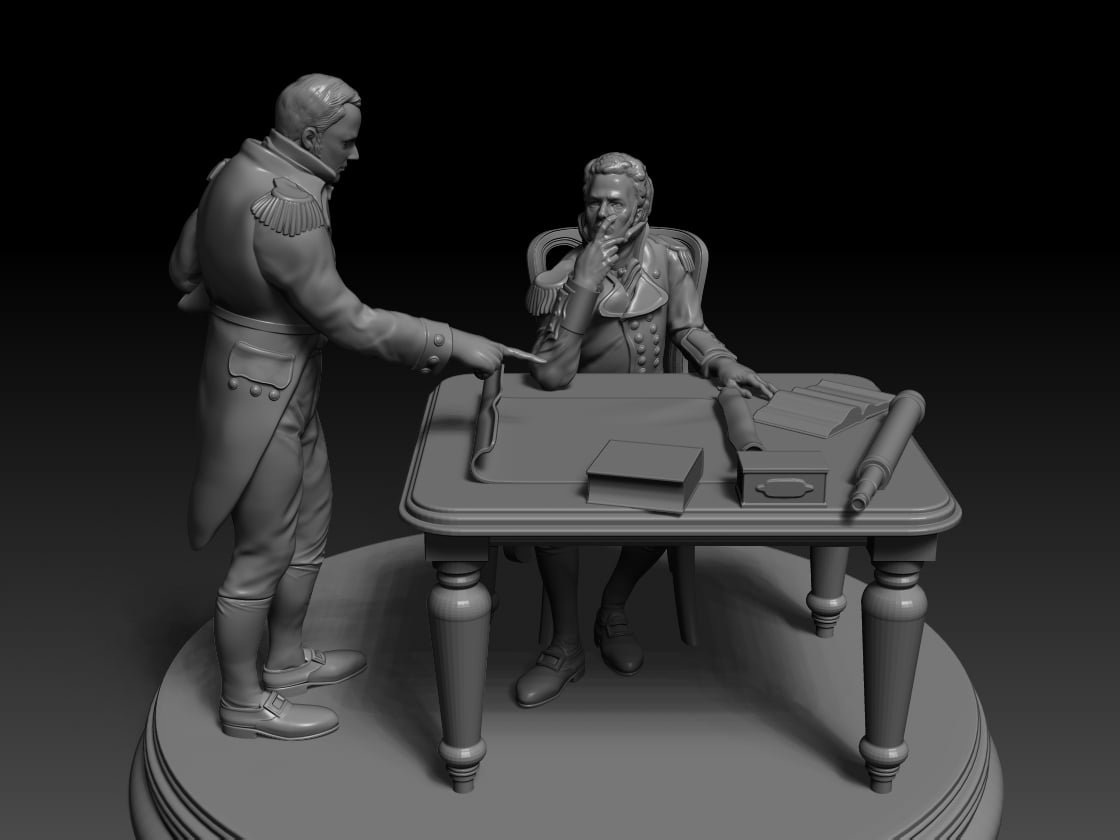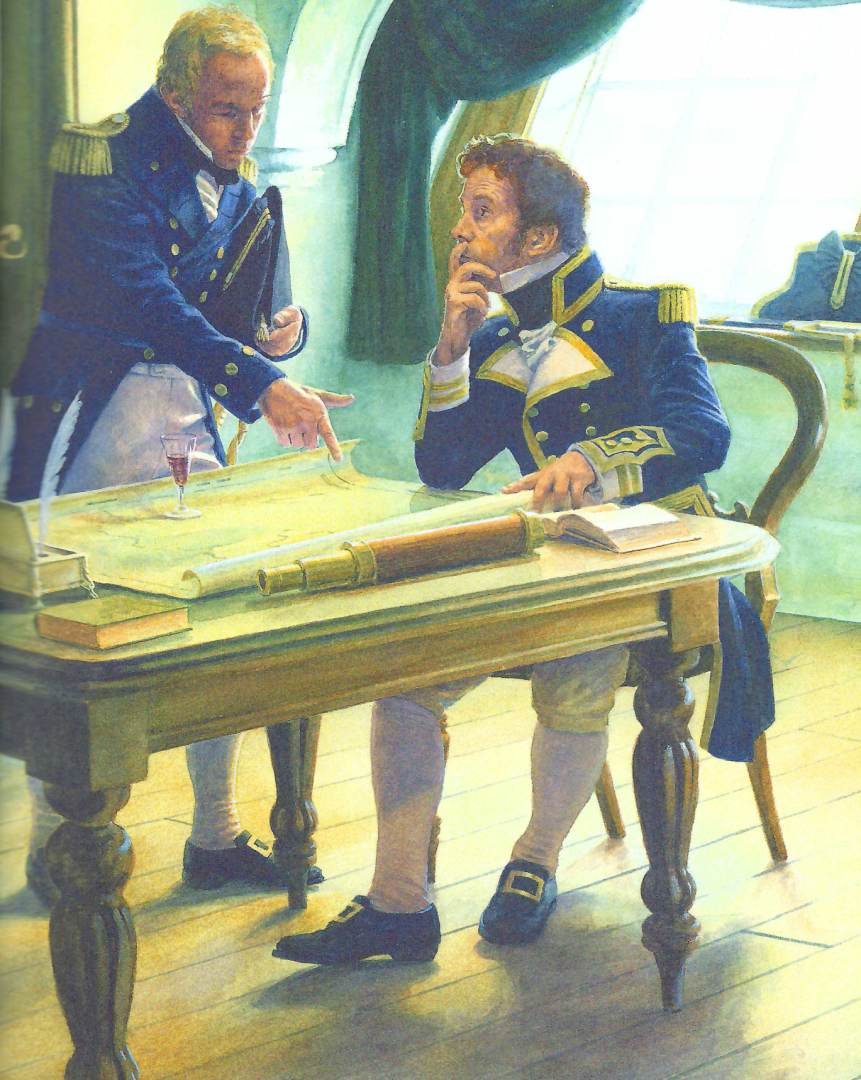-
Posts
2,317 -
Joined
-
Last visited
Content Type
Profiles
Forums
Gallery
Events
Everything posted by chris watton
-
Just a little update, I have had quite a few enquiries asking if I will ever have the Flirt Master Shipwright in stock. I was going to retire this, as I could no longer get the machined blocks that are standard with this kit. However, I now have really nice CNC machined blocks in stock again, so have ordered enough boxwood and 3mm birch ply to produce a small run of these kits. When I say 'small run., I do mean that, not 'Limited Edition' of 'only' 1000! I will do two runs of 6 kits, 12 in total. The only change I made from the original Master Shipwright Flirt is the 18' cutter, which will be a 3-D printed hull and laser cut boxwood floors, seats and oars. Regarding Harpy, I have completed all of the A1 size plan sets and started the manual. Once Jim has completed the model and I finish the manual, the kit will be released - am thinking October time.
-
Regarding the rig, I shall add a note saying the modeller can omit any rig directly relating to sails, like sheets, tacks, clews and bowlines. If the modeller wishes, they can just add the standing rigging and runing rigging relating to yards and booms only. But the plans and blocks and thread will allow for a fully rigged model - but you don't have to, you can stop once the yard rigging (Tyes, lifts and braces) is complete.
- 76 replies
-
- Harpy
- Vanguard Models
-
(and 1 more)
Tagged with:
-
Any part that meets another at an angle will require sanding in order for them to sit flush. The stern counter requires sanding so that the top edge is level with the bottom edge of the upper stern part. Do not be afraid to sand/file parts that would fit much better if you did this - wooden kits require much sanding/filing, unlike plastic kits. I have attached your pic with added yellow lines, showing you what you need to take off. I suspect the bulkhead tabs above deck level also could do with a little more sanding, so the bulkhead pattern will sit flush with the whole of the contact surface of each.
- 177 replies
-
- Sherbourne
- vanguard models
-
(and 3 more)
Tagged with:
-
Cheers guys! This does mean that orders will be done a lot quicker, and we will be able to actually build up more stock. Within the next week, I will have completed/finalised the Harpy plan sets (am on the final 4, rigging). There will be 16 x A1 size plan sheets for Harpy, along with the manual. I will start laser cutting the production sheets soon. Once I finished the plans, I shall have one last look at these darned officers/table/chair figures, as they have been revised again, but I don't want to waste time on these until all my work for Harpy is complete. Today, I did think about adding the nice CNC machined blocks as standard for Harpy. However, I backed off, as this would increase the kit price by around £40. So I think having them as an optional extra would be better. I know people moan about the standard blocks, but in all honesty, they are the only viable choice when they have to be bought in the tens of thousands, some in the hundreds of thousands. It takes suppliers time to produce 50 kits worth for just one kit.
-
I know that painting, it was that what inspired me to do Harpy plus I love the name, from this book (Highly recommended): Regarding the paint scheme, I will suggest the usual red for inner bulwarks and cannon carriages, black for main wale (of course) and gunwale. Sides can be painted yellow ochre or, as I want for the prototype model, varnished, purely for aesthetic reasons. Like Speedy, I have little doubt she was daubed in all kinds of colours during her long career, so it is entirely up to the modeller what they want to do with the colour scheme. I did try to join that Kent History site, but I was presented with a lot of crazy questions about Kent in order to join, which I hadn’t the foggiest clue how to answer…..
- 76 replies
-
- Harpy
- Vanguard Models
-
(and 1 more)
Tagged with:
-
Add yards, but just add the parrels/slings and tyes, though, and lifts later.
- 146 replies
-
- Adder
- Vanguard Models
-
(and 1 more)
Tagged with:
-
Damn! That's the trouble with the pre made hulls, they need to be packed well and in a box, otherwise they just won't make it in one piece. Stuff like that is always better if ordered with larger items. But we will look at the postage options, these are always a nightmare and sometimes way over charge. When that is the case, I always refund the difference.
-
Very well done, Glenn, you have come a very long way in the space of only a few years. Your Indy looks magnificent.
- 587 replies
-
- Indefatigable
- Vanguard Models
-
(and 1 more)
Tagged with:
-
I have tried to made the basic hull assembly as painless as possible. I remember a thread where someone was building a Speedy, and got frustrated because some parts didn't fit as they should. and what happened was the aft deck supports were not pushed all the way home, and then glued that way. This meant a whole new laser cut set for the hull. I now try to design these things to avoid such incidents, hence all the retaining tabs to help lock/secure parts into place. I think I already mentioned this on my thread, but the upper deck planking lines are a rework from original plans for a Cruiser Class, which shows the actual deck planking lines. Not the same class, I know, but designs are only a year apart, and with a little adjustment to the lines (Cruiser Class a little wider at the bow), the planking lines are more or less the same from the contemporary plan.
- 76 replies
-
- Harpy
- Vanguard Models
-
(and 1 more)
Tagged with:
-
OK, over this weekend, I shall have three scales for the new 3-d printed 24 foot cutter in stock. 1:72nd, 1:64th (of course..) and 1:48th. Each will come with a fully detailed 3-d printed hull with nice clinker planking and a sheet of 0.8mm pear for the laser cut fore and aft floor, seats, knees and oars. 24′ Cutter (full kit – various scales) – VANGUARD MODELS This is not an enlarged file of the 18 foot cutter, but completely new and based off original plans.
-
When nicely planked, I see no reason why the modeller should not just leave the lower hull uncoppered or unpainted.
- 422 replies
-
- Vanguard Models
- Sphinx
-
(and 1 more)
Tagged with:
-
I have been asked about 72nd scale versions of the 3-d printed boats. These are now done (well, almost, 18' cutter has about an hour's printing left), so later I shall have a 24 and 26' launch and an 18' cutter available in 72nd scale. Later this week I shall have print and laser cut files for a 24 foot cutter. ETA - Now in stock: 3D-Printed Ship’s Boats – VANGUARD MODELS
-
Brace pendants should be black, my mistake...
- 341 replies
-
- Sophie
- Vanguard Models
-
(and 1 more)
Tagged with:
-
I should get the final files for the figures next week, which I then need to set up on my 'slicing' program. I am thinking the more delicate parts may be better left on their base and supports, to help protect the more delicate parts, and the customer removes the supports. This isn't an issue, as I always use the lightest supports I can get away with to minimise the 'pock-marks' they leave behind. I hope to have the full suite of 3-d printed ships boats before the year's out (so Sphinx and Indy will have an option for all 3-d printed hull boats) - this will be quite a large investment in money, but I think worth it, as even I prefer the 3-d printed hulls, so imagine quite a few customers may, too. Regarding Harpy, I shall be sending Jim the laser cut, PE, 3-d printed parts next week, so you should see a build log of this soon. (I am very much looking forward to seeing what Jim does to this, I love the lines). I still have around 4-5 full working weeks for CAD (plan) work, so still plenty for me to do before even starting preliminaries for kit 18, which I anticipate starting in September. Finaly, I have been told by my PE supplier that copper is back on the menu, but more expensive. So, I will eventually have the PE copper plate option back for kits that have copper bottoms. I will keep them a separate option, as I know some prefer not to copper the bottom, or some even prefer the tape, so do not want to increase the cost of a kit to take into account the expensive PE copper when not everyone will use it - Best to keep it an option.
-
The figure set is being reworked, so should have an update within the next few days. In the meantime, I am busy producing Harpy fittings, laser cutting kits parts for orders and still working on Harpy CAD drawings in between everything else. We have now become so busy that my wife will be working full time for Vanguard Models from September, as it is neither fair or untenable for her to have a full time day job, and then to come home and work again until late putting kits together. My accountant confirmed the validity of this today. Our house is up for sale, as we need a larger premises, but no bites as yet, dammit....
-
Cheers guys. My problem is that the carver I have used from the start seems to have vanished, I can only think that they may have passed away. He was responsible for all natural and carved decoration, both figures and stern/figurehead 3-d prints. I prefer to stick to just one person or company for each discipline used, that way they know exactly what I want and know what they can do. Problems arise when you have to find a replacement for the previous person or company. To try a new sculptor out, I thought the best thing to do was to give them a figure or two to work on. This is the main reference I suplied, along with another two references for the period clothes, from head to foot. I thought at the time that this would be a very nice addition to my figures range: Now, if something is not right, I will not waste my time producing them (the 3-d prints do take a lot of time) and selling something I am not 100% happy with - even though at my main scale, these details will be barely seen, more so when in their cabin with deck beams obscuring a lot of the view. This was to be a 5-part set and would take a lot of time to produce and post process, so if there are doubts about this set, I have no problem abandoning it and turning my attention to kit design, the one thing I do know well and have complete control over. I will give this carver one more chance to get the problems highlighted sorted - so the fat lady hasn't broken into song quite yet.
About us
Modelshipworld - Advancing Ship Modeling through Research
SSL Secured
Your security is important for us so this Website is SSL-Secured
NRG Mailing Address
Nautical Research Guild
237 South Lincoln Street
Westmont IL, 60559-1917
Model Ship World ® and the MSW logo are Registered Trademarks, and belong to the Nautical Research Guild (United States Patent and Trademark Office: No. 6,929,264 & No. 6,929,274, registered Dec. 20, 2022)
Helpful Links
About the NRG
If you enjoy building ship models that are historically accurate as well as beautiful, then The Nautical Research Guild (NRG) is just right for you.
The Guild is a non-profit educational organization whose mission is to “Advance Ship Modeling Through Research”. We provide support to our members in their efforts to raise the quality of their model ships.
The Nautical Research Guild has published our world-renowned quarterly magazine, The Nautical Research Journal, since 1955. The pages of the Journal are full of articles by accomplished ship modelers who show you how they create those exquisite details on their models, and by maritime historians who show you the correct details to build. The Journal is available in both print and digital editions. Go to the NRG web site (www.thenrg.org) to download a complimentary digital copy of the Journal. The NRG also publishes plan sets, books and compilations of back issues of the Journal and the former Ships in Scale and Model Ship Builder magazines.





